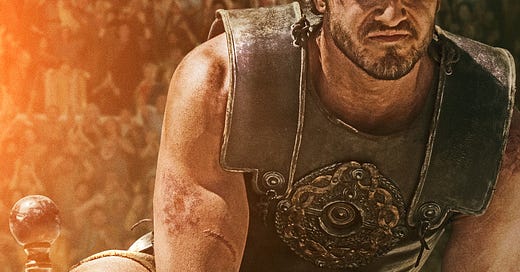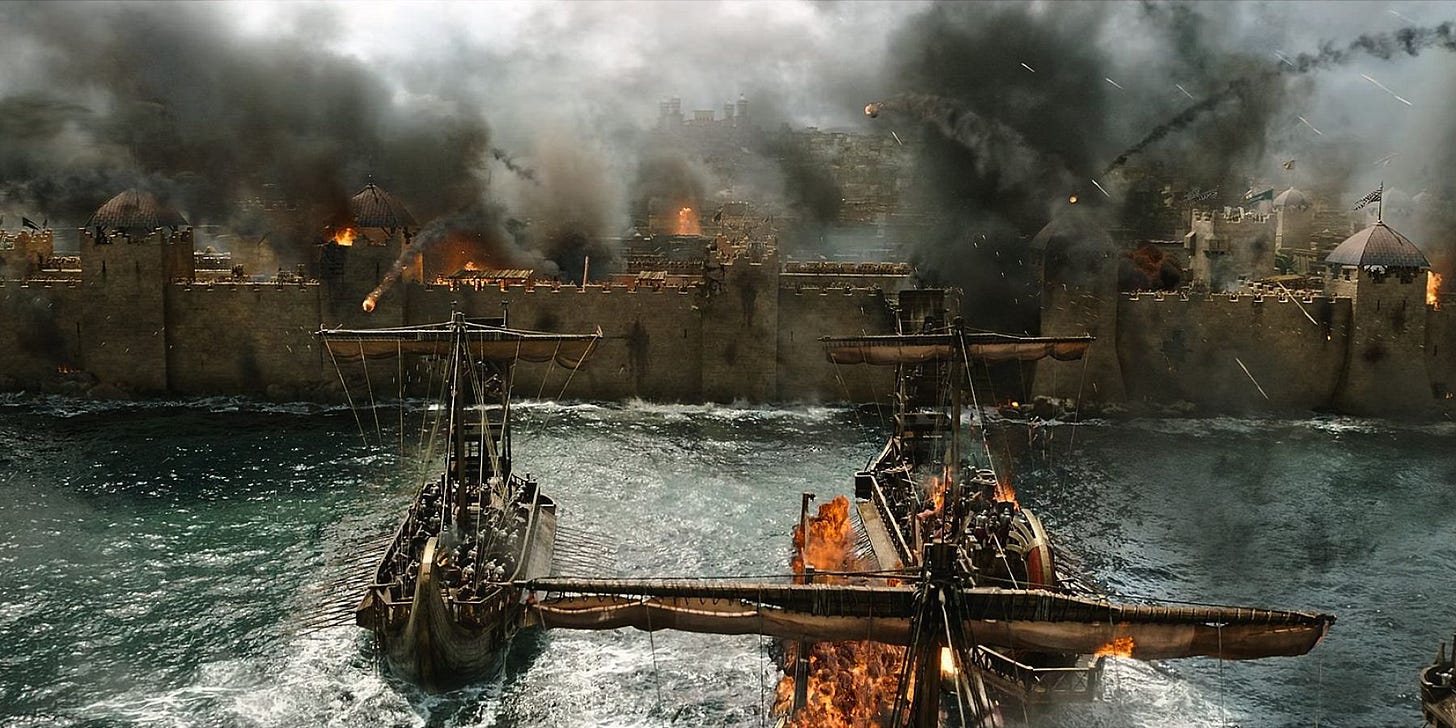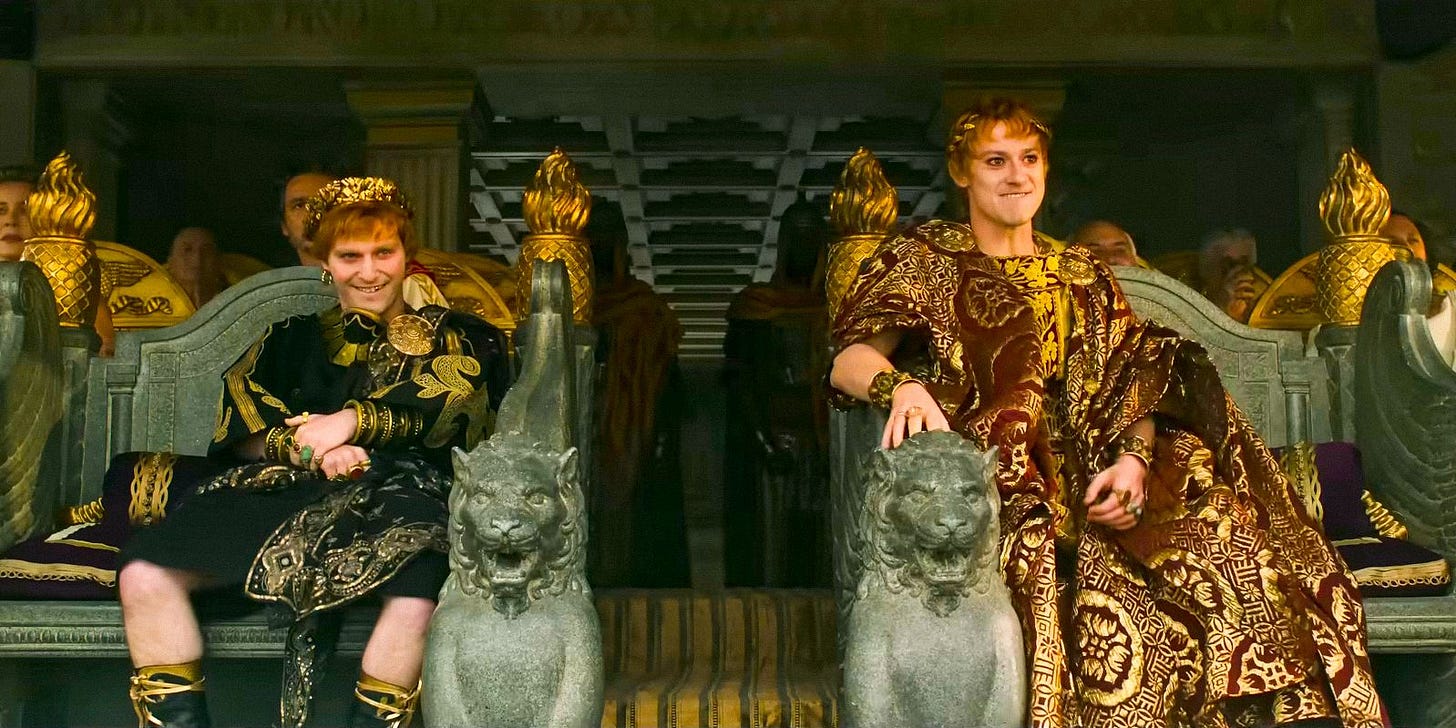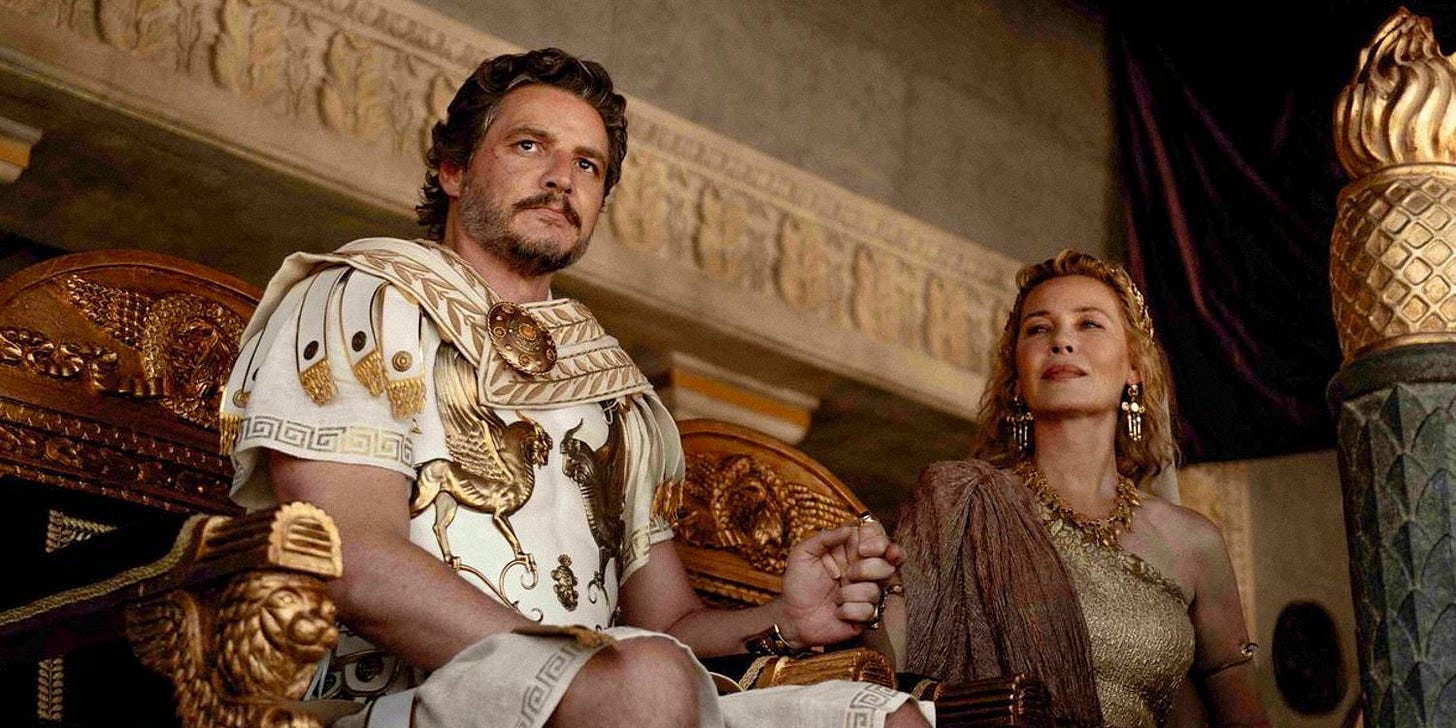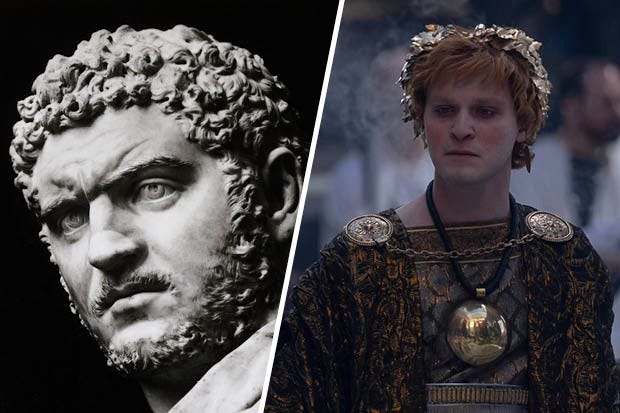Gladiator was not wholly historically accurate. But it stands not just as a great silver screen epic, and arguably one of the greatest films ever made.
Director Sir Ridley Scott, of Blade Runner fame also announced a sequel to his 2000 epic, released in 2004.
Whilst highly anticipated, he came under criticism for historical inaccuracies, though his response to this and for his 2023 film Napoleon were more terse and marked compared to the 2000 release.
Despite the historical inaccuracies, the film overall is quite good.
Plot
The film starts 16 years after Marcus Aurelius dies, or was murdered by his son and successor as Emperor, Commodus. Commodus, of course, dies at Maximus’s hands at the end of the 2000 film, and he gives Marcus’s instruction of Rome becoming a republic again before he dies from his wounds.
Commodus’s sister, Lucilla, had a son with Maximus before he became Marcus’s leading general - Lucius Verus. It was hinted that both knew each other before marrying her deceased husband, also named Lucius Verus. This son, though, was the protagonist of Gladiator II, who showed the same courage, valour and honour as Maximus.
By this time, the Empire was ruled by twins Geta and Caracalla, who in many ways echoed Commodus in their tyranny and debauchery. They installed Acasius as their chief general, who conquered the Free City of Numidia. Lucius, separated from his mother at that point, was serving under the chief of Numidia, though both were captured as slaves when the city fell to Acasius and the Roman forces. Lucius’s wife died in the assault, and like Maximus he awaits his wife in the afterlife.
Lucius and his chief are taken as gladiators, and face off killer baboons which kill the chief though Lucius triumphs over them. The gladiator troop runner, Macrinus, sees this and is impressed by him, and brings him to his service.
Macrinus’s plan to take power of the Empire himself, as he was a slave under Marcus Aurelius and wants to have the Empire serve him over him serving the Empire.
After gaining the favour of Emperors Geta and Caracalla, he works to cause tension between them, and kills both of them to be accepted as Emperor. Employing a concocted plot to expose Lucilla and Acasius, he has a final showdown with Lucius who kills him and is accepted as Emperor by Acasius and Marcrinus’s forces.
Positives
Lucius is of a similar mold to Maximus. He is a strong in combat, and a respected leader. This is shown in the opening Numidia battle, and also when commanding his fellow gladiators. Like Maximus, he is haunted and grief-stricken by the death of his wife, and awaits her embrace again in the afterlife.
Lucilla, like in the first film, showed charm and beauty, and also a wily sense in manoeuvring against the powers that be. Though, like in the first film, she was uncovered. Commodus didn’t kill her, but unfortunately Macrinus did for her scheming. Connie Nielsen performed this well in both films.
Macrinus was a well-played enemy, as it became apparent that he was the power behind the throne, as it were, as the film progressed.
The settings, costumes, and drama of the Colosseum were well done. Though the fights, despite the flooded arena, were not as epic or grand as in the 2000 film.
The Numidian battle scene had good dialogue and CGI, and like the 2000 film, set the stage for the protagonist’s adventures and vengeance.
The story was well-paced, and captured the imagery, tone and magic of the first film.
Negatives
The historical accuracies were glaring.
Granted, the film isn’t intended to be a documentary. And Sir Ridley’s open rejection of historical accuracy adds to this.
Geta and Caracalla were co-Emperors for a while. Though the characterisation of Caracalla differs from his bust. His bust portrays him as a tougher man, though not as dolled up as in the film.
Macrinus wasn’t known to be black, and nor a slave of Marcus Aurelius. He did become an Emperor, though he wasn’t killed soon after taking the throne.
Numidia was a region of North Africa and not a free city as depicted. By 200 AD, the area had been solidly Roman for centuries.
The Colosseum was flooded for gladiatorial events, though the use of sharks to trap fallen gladiators is moot.
And the killer baboons aren’t really how baboons behave. Yes, they can be aggressive, but they’re not bloodthirsty killers as depicted. Primates weren't often used as combat animals, compared to elephants, rhinos, lions and tigers. And whether gladiators rode rhinos is moot also.
Overall, the film is well done, and echoes the tone of the 2000 movie.
The historical inaccuracies are galling, though they don’t detract from the film’s quality.
8/10
A good outing that was a good homage to the 2000 film.
